
Strength for SUP – Improving Power Endurance and Stability
If you’re an experienced SUP paddler you’ll know the importance of your legs in paddling. If you’re relatively new to the sport you’ve probably experienced how tired your legs can get, especially if you’re paddling in rougher water, are paddling on a tippy board, are paddling for a longer distance than normal, or trying to paddle harder than you usually do.
You’ll recall from “The Six Fundamentals of Paddle Technique” in the August issue of The Catch, that we discussed the important of using big muscles preferentially over smaller muscles. There aren’t many muscles in our body bigger than those in our legs, so we really want to be trying to find ways to use them in our paddling. If we’re going to do that, we want them to be up to the task so we need to spend time developing power and power endurance in those muscles. You’ll also recall from “SUP Stability Tips for Both New and Experienced Paddlers” in the July issue how important our legs are for stability. So, no matter how you approach it, our legs are vital to our paddling. We’ve got to spend time training them and the reality is, we can do more for them to help make our paddling better by training them on land than we can by just doing all our work on the water.
It doesn’t necessarily need to take much time. By taking as little as fifteen minutes, three times a week, to train our legs we can make significant improvements in power endurance and proprioception in our legs that improves our paddling and enhances our stability at the same time.
You don’t have to go to the gym to train your legs for SUP. While that may be necessary if you’re developing power or max strength by doing, for example, squats with heavy weight, you don’t need the equipment gyms provide to improve the power endurance in your legs or proprioception in your lower legs and feet (and thus your balance). I’ll share with you here a simple leg circuit that’s extremely useful for paddlers and can be done anywhere – indoors or outdoors – just about any time you want. I usually do it three times a week and find that it is really effective if I do it just after I get off the water.
Before sharing it, let’s take a look at the two abilities we’ll be training – power endurance and enhanced proprioception.
Power Endurance
Power, in a physics sense, is defined as the amount of energy transferred or converted per unit time. So, when we’re talking about power in the gym or in a sport movement, it’s not a function of how much weight we are lifting but rather how fast we are moving it. You can see the importance of power in paddling. If we’re going to accelerate our board forward, we’ve got to work against the water gathered on our blade dynamically, exerting force quickly to result in the acceleration. This means that all the force producing muscles used in the stroke need the ability to exert that force quickly.
Power endurance is simply the ability of our muscles to produce the required power repeatedly and sustainably for the duration of our workout or race. So, if we can enhance power endurance in our paddling muscles, we clearly enhance our ability to accelerate our board for extended periods of time. Since our legs are vital to our paddling, improving the power endurance of our leg muscles can have a huge beneficial impact on our performance.
Proprioception
Within certain muscle cells there are specialized receptors that respond to things like pressure, tension and vibration, providing detailed and continuous information to our central nervous system about the position of our limbs and body in space. They can detect changes in, or loss of, balance and provide our brain with information about it so that our brain can dictate an appropriate motor response to maintain balance and stability.
The more highly developed and sensitive this neural pathway, the more precise and immediate corrections in balance can be made. Clearly, well-developed proprioception in the muscles of our lower legs and feet can have a huge benefit in enhancing our ability to response to how our board moves underneath us, thus enhancing our stability.
The Leg Circuit
This leg circuit can be done anywhere, any time and, depending on the number of rounds (times through the circuit) and reps, can be completed in anywhere from five to fifteen minutes. Let’s take a look at each exercise, how it’s done and how it can enhance power endurance, proprioception or both.
Split Squat Jumps
This is a great plyometric exercise that involves all the large muscle groups of your lower body. Plyometric exercises are exercises that involve jumping or leaping with controlled landings in which muscles exert great amounts of force in extremely short intervals of time in each repetition. They are fantastic for creating power and, if you do enough reps, power endurance. The fact that the landings from each leap are quiet and controlled requires enhanced proprioception and fine motor control in the feet and lower legs, and this leads to a more highly developed neural pathway responsible for maintaining balance and stability on your board.
Start with your front foot far enough forward of your body so that you have an angle of 90 degrees or greater at your knee to prevent injury. Be sure not to let your front foot creep back closer to your body as you crank out your reps. The more explosively you jump the higher you’ll go and the more you’ll be developing power in each rep. Focus on landing quietly and with control. There should be no slapping sound as your feet hit the ground upon landing and no loss of balance. Landing this way will require muscles in your legs to control the deceleration as you land and heightened use of proprioceptors in your feet and lower legs to simultaneously control both the deceleration and maintain balance. This helps develop and improve the neural pathway used to maintain balance when you are on your board.
Obviously, the more reps you do, the more you are training your power endurance. I suggest starting with 10 to 15 reps and 2 sets. As you develop more endurance you can increase the number of reps to 20, 25, 30 reps or more and increase the number of sets. As you get better at this exercise you can also increase the difficulty of each rep by increasing the height of each jump which requires a greater power output in each rep and more work in the landing. If you’re really advanced, you can hold a dumbbell in each hand, though I caution that you should be very careful with this. You’ll want to make sure that doing so does not affect your form and the position of your upper body over your legs. You won’t need to add much weight to really increase the load in each rep.
I usually do 30 reps and 2 to 3 sets when I do split squat jumps, with each rep including both left and right side forward.
Frog Jumps
Frog jumps are another great plyometric exercise working your lower body as well as stabilizing muscles in your core. It’s also a real lung burner if you do enough reps. As with split squat jumps, the level of difficulty of each rep depends on how explosively you jump, this time for distance instead of height, and how quietly and controlled you are able to land. The quality of each rep is extremely important. Again, you are developing heightened proprioceptive ability in your feet and lower legs that will help with your balance while you are working on power and power endurance in your legs.
Again, I suggest starting modestly, making sure your form is correct and your landings are quiet and controlled. Start with 10 to 15 reps and, as you get more comfortable with the exercise gradually add reps and distance in each jump. I usually do 20 to 30 reps in each set, depending on whether I am doing the exercise as a standalone or as part of a circuit.
Bulgarian Split Lunges
This is a great lower body exercise that can be done without the jump you see in the video, although I prefer doing it with the jump to increase power development and add in the enhanced proprioceptive demands associated with a controlled, quiet landing.
You’ll need a bench, chair or step to place your back foot on (a park bench works great) and you’ll find it a bit more difficult to balance if the top of your foot lies on the bench in a plantar flexed (toes pointed) position rather than just your toes contacting the bench with your foot in a dorsi flexed position. If you choose to do these with the jump, you’ll again want to make sure your landing is as quiet as possible. You don’t need to jump very high to really add difficulty to this exercise. As with split squat jumps, make sure your front foot is far enough forward to give you an angle at your front knee of no less than 90 degrees when you are at the lowest point in the movement.
This is a great exercise for developing power endurance as well as your balance. You may want to start by holding onto something with one hand for stability before progressing to doing the exercise with hands on your hips.
I generally do 30 reps each side per set but, as with the other exercises introduced so far, I suggest starting modestly, making sure your form is correct and doing 10 to 15 reps for 2 sets at first.
Lateral Bench Jumps
You’ll need a stable bench that can take your body weight for this exercise. I find that team benches at soccer or baseball fields work great. They are generally wide enough, stable and not too high. Be sure that whatever you use is stable enough that it won’t topple if you misstep and is smooth and level on top so that your landings won’t be jeopardized by an uneven surface. If you can’t find a suitable bench you can drop this exercise or replace it with step lunges. It’s better to be cautious than injure yourself.
Jump explosively off of one foot in an upward but lateral direction so that your take off foot lands on the bench and your other foot, which started on the bench, lands on the ground on the opposite side of the bench. As usual with plyometric exercises your landings should be controlled and quiet.
It’s pretty difficult to do these without some help from your arms for jumping and for balance.
I do 30 reps each side per set, but as with the other exercises, start modestly with 10 to 15 reps and make sure you are doing things properly. As you feel yourself getting better you can add repetitions and sets
Skating Motion
Though I am using a medicine ball in the video, alternatively you can do this exercise with a dumbbell held in front of you. If you’re just learning the exercise I’d recommend using no extra weight with your hands held in the same position. Obviously, if you’re doing this work after getting off the water you’ll likely being using no extra weight as well.
In this exercise, you are trying to jump laterally as far as possible and stick your landing on your opposite foot. Land quietly with controlled deceleration of your body before accelerating and jumping explosively in the opposite direction. You’ll sort of feel like you are “reloading” as you prepare to jump again in the opposite direction after landing and this gives you a chance to summon more muscle fibers to contribute to an explosive jump and really working the proprioceptors.
This is a great exercise for power endurance and proprioception with your muscles working in a different direction than in split squat jumps or Bulgarian lunges. If you’ve had ligament issues in your knees, you may want to approach this exercise with caution, as you’ll be stressing your knee joint in a bit of a lateral (sideways) direction as you land. Start cautiously with small jumps to test out the tolerance of your knees for this exercise, and then jump a little further each time you do it, always aware of your knees as you do so.
Again, I do 30 reps per side each set but recommend starting with 10 to 15 reps and, over time, adding in reps as your power endurance develops.
Low Walking
Although this exercise is not plyometric, for me it is a great exercise that is very simple to do. With your hands on your hips step forward with one foot like you are going to do a step lunge. Be sure to take a large enough step that the angle at the knee in your front leg is no less than 90 degrees at the lowest point. Come up only enough to allow your back foot to pass under your body and step forward. You’ll need sustained contractions in your hamstrings, glutes and quads and some good core stability to complete each set which is excellent for developing strength endurance in these muscles. In time, this should help make standing in a knees-bent, athletic stance for prolonged periods on your board feel easier.
I generally do 30 to 60 reps on each side in each set. Again, start modestly with 10 to 15 reps until you are certain you are doing the exercise correctly, and then over time add reps as your ability to do so increases.
For variation, this exercise can be done as a walking step lunge where, instead of staying low between repetitions, you stand up over your front foot and then take a step forward and lunge on to your opposite foot. If you’re doing step lunges, make sure the angle at the knee on your front foot is 90 degrees or greater at the bottom of each step. Try to get as low as you can with the knee of your back foot as low to the floor as possible. You’ll pretty quickly be able to determine how big a step forward you need to take each rep to ensure the angle at your front knee is appropriate for the depth that you are reaching with your back knee.
If you are unable to find a bench for lateral bench jumps, substituting in step lunges in their place is a great idea.
Circuit vs. Sets
My favorite way to do these exercises are as part of a circuit, where I start with split squat jumps, move to frog jumps, then to Bulgarian split lunges, etc. Once I have completed one “round” of all the exercises I go back to the start and go through them all again. Generally, I do 3 or more rounds through the exercises, but a good starting place is two rounds.
If you’re doing straight sets of one exercise before moving on to the next, you’ll be taking rest between each set. This is appropriate for lower reps with heavier weights. However, circuit training is great for developing power endurance because you can go from exercise to exercise without taking any rest (or taking minimal rest) which really adds to the endurance effect. This provides the added bonus of getting the work done in a shorter period of time. Make no mistake, circuit training is hard and in this particular circuit the muscles in your legs will be screaming, but it is a great way to really improve your power endurance in a comparatively short period of time. This is especially true if you do it shortly after getting off the water 2 to 3 times a week. Doing 2 to 3 rounds after getting off the water will take about 10 minutes and really work the legs when they are already in a somewhat fatigued state and you’ll quickly see the benefits on the water within a couple of weeks.
I’ve used each of these exercises at various times as part of other workouts, doing 3 to 5 sets per exercise or including some of them in other circuits which include upper body and core work as well.
I am convinced if you incorporate exercises such as these into your program on a regular basis (I’d suggest as a minimum at least once/week) you’ll soon feel both stronger and more stable on your board and notice your legs don’t fatigue nearly as quickly. I guarantee you’ll feel better at the end of races, and the extra life you have in your legs in late stages of races as a result of this training will allow you to paddle a lot more effectively when your technique normally begins to break down. If you aren’t a racer, you’ll find that you’ll be able to paddle longer with enhanced stability which should make your paddles more enjoyable. Give it a try!
Happy training and happy paddling!
Paddle Events
DeSatnick Foundation Around the Cape Paddle
Ohio River Paddlefest Races
The Circumnavigation-Tilghman Island 2024
Recent Classifieds
SIC XRS 14 x 22
- Sell
- 2 days ago
- Stand Up Paddleboard
- Chattanooga , Tennessee United States
- 26 views
Wanted! Ocean / downwind 14 foot SUP
- Buy
- 3 days ago
- Stand Up Paddleboard
- Main Street , 07005 Boonton , New Jersey United States
- 25 views
one edge pro 2.0 hollow 14′ x 23.5”
- Sell
- 4 days ago
- Stand Up Paddleboard
- 53066 Oconomowoc , Wisconsin United States
- 66 views
2021 Starboard Allstar 14×24 5
- Sell
- 5 days ago
- Stand Up Paddleboard
- 21085 Joppatowne , Maryland United States
- 72 views
2023 SIC RS 14 x 24.5
- Sell
- 6 days ago
- Stand Up Paddleboard
- Hampton, VA
- 51 views
Subscribe for Premium Content and Coaching
Join the Paddle Monster paid Plan Today!
You May Also Like


Paddle Foundations: The Six Fundamentals of Paddle Technique
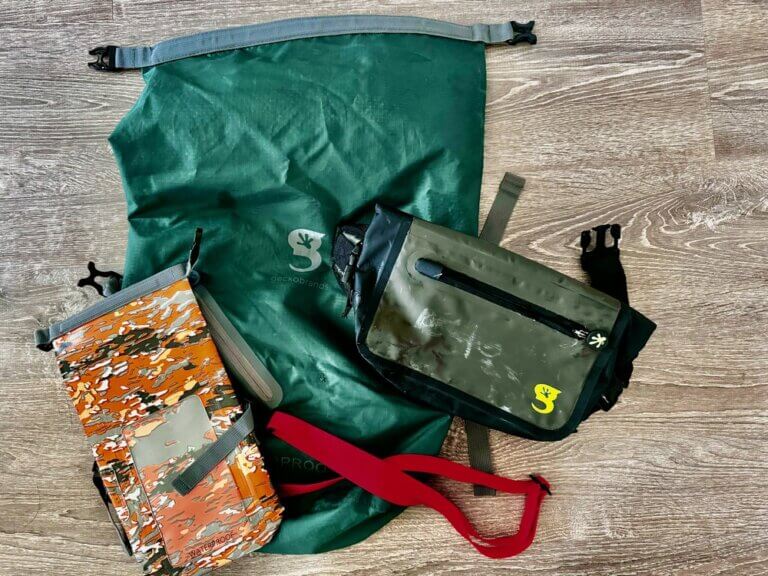
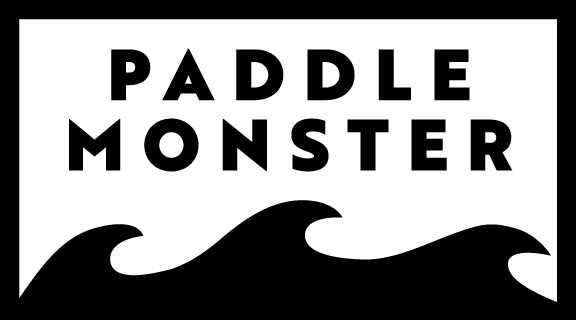
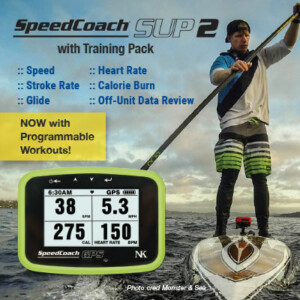
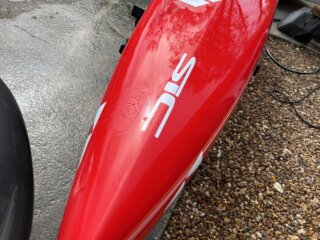
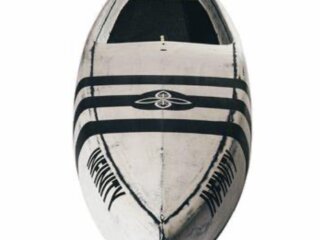
4 Comments
Lovesuplife B
Thank you Larry! This is very helpful! Would love to see more circuit workouts that helps/transfers on to SUP! 💗🏄🏻♀️
Larry Cain, Paddle Monster Head Coach
Thank you! We’ll be posting more circuit and workout suggestions in upcoming issues as it makes great winter content, so stay tuned!
larry
Lovesuplife B
Thank you Larry! This is very helpful! Would love to see more circuit workouts that helps/transfers on to SUP! 💗🏄🏻♀️
Larry Cain, Paddle Monster Head Coach
Thank you! We’ll be posting more circuit and workout suggestions in upcoming issues as it makes great winter content, so stay tuned!
larry